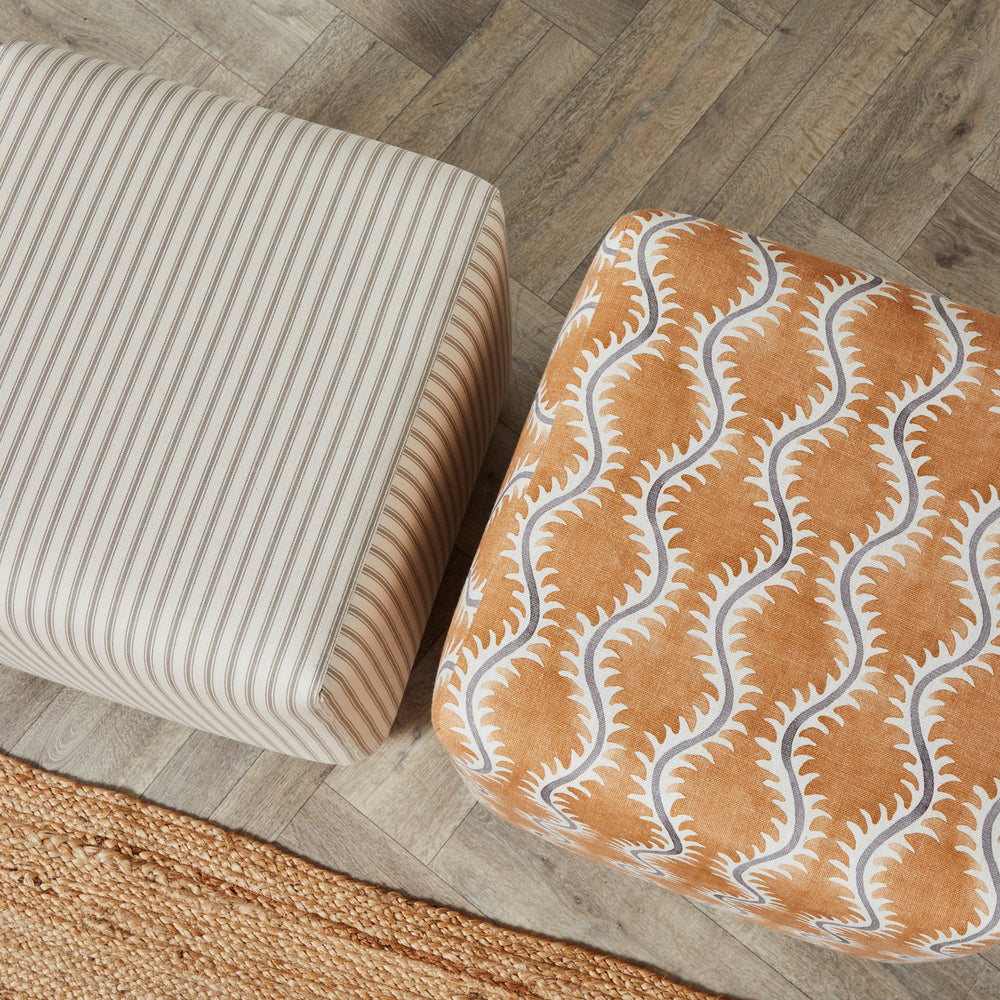When it comes to selecting the perfect footstool, one of the most crucial decisions you'll make is choosing the right material.
The material not only impacts the aesthetics but also influences the durability, comfort, and maintenance of your footstool.
With various options available, it's essential to weigh the pros and cons of each to determine the best material for your needs. In this blog post, we'll explore some common footstool materials and help you make an informed decision.
1. Leather
What’s more classic than a black leather footstool? Leather footstools exude elegance and luxury. They are not only visually appealing but also highly durable and easy to clean.
Leather is known for its longevity, and with proper care, leather footstools can last for many years. They are especially suitable for apartments with a classic or contemporary aesthetic. However, leather can be more expensive than other materials, and it may not be the best choice if you have pets prone to scratching.
2. Fabric
Fabric footstools offer a wide range of colors, patterns, and textures, making them versatile for various interior design styles. They are typically comfortable and cozy, providing a soft surface for resting your feet.
Fabric footstools are relatively affordable and can be a great choice for apartments with a more relaxed or casual decor. However, fabric can stain more easily than leather, so it may require more frequent cleaning or the application of fabric protectors.
3. Wood
Wooden footstools bring a touch of natural beauty to your living space. They are known for their sturdiness and longevity. Wood can be crafted into various styles, from rustic to modern, making it a versatile choice for different interior design themes.
Wooden footstools are ideal for those who appreciate the warmth and charm of wood furniture. However, they may not be as comfortable as padded options and may not have hidden storage compartments.
4. Metal
Metal footstools are known for their sleek and modern appearance. They are often lightweight and easy to move around, making them a practical choice for apartments where furniture needs to be flexible. Metal footstools can be durable and resistant to wear and tear.
They are a great choice for contemporary and industrial-style apartments. However, they may not provide the same level of comfort as fabric or leather options.
5. Synthetic Materials
Footstools made from synthetic materials like faux leather or microfiber offer the look and feel of natural materials but with added benefits. They are often more affordable than genuine leather and easier to clean. Synthetic materials can also be a good option if you're concerned about environmental impact or animal welfare. However, they may not have the same level of longevity as natural materials.
In conclusion, whether it’s a modern black leather footstool or a patterned upholstery option, the best material for a footstool depends on your individual preferences, budget, and lifestyle.
Consider factors like durability, comfort, maintenance, and aesthetic appeal when making your decision. Whichever material you choose, a well-chosen footstool can enhance the comfort and functionality of your living space while adding a touch of style and personality.




